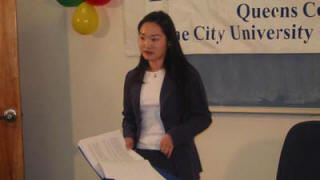
Educational Changes in Mongolia
Timeline of Mongolia’s Educational System from 1911 to 2003
1911 – The first formal and secular education in Mongolia begins.
1935 – 55% of all party members in Mongolia are illiterate. Only 2.7% of all children are enrolled in secular state schools. 13% of all children are enrolled in monastic schools.
1938 – Stalin orders the destruction of nearly all monasteries in Mongolia.
1940 – Compulsory state education is created for children between the ages of eight and eighteen. Education is paid for by the state, and accounts for more than 15 percent of Mongolia’s GDP. Mongolia’s educational system is also largely supported by funds from the Soviet Union.
1941 – Under Stalin’s orders, in the 1941 the traditional Mongol script, based on Uighur script, is replaced by the Cyrillic alphabet.
1942 – The Mongolian State University, Mongolia’s first university, opens its doors with three departments: Medical, Pedagogical, and Agricultural studies.
1990 – Mongolia reaches a literacy rate of over 90% and before 1990, reaches over 95% literacy.
1991- Privatization creates new challenges in education and daily life. Universities are no longer free, and privatization forces many herders to grow larger amounts of livestock to become profitable, requiring many of the children (predominately boys) to remain on the land rather than receive an education.

1992 – The number of children dropping out before completing secondary school increases from 6,133 in 1989, to a peak of 48,446 in 1992.
1993 – UNESCO/DANIDA (Danish International Development Fund) sponsors “The Gobi Women’s Project” whereby 15,000 nomadic women, aged 15 to 45, are currently receiving training through radio to better their conditions (see below)
1995 – Government resolution 194, Procedure for Granting loan and assistance to students studying in professional schools.
1998 – The total number dropouts between 1989 and 1998 exceed 166,000. Two-thirds of all drop-outs occurred at the primary school level, from which nearly 70% were boys.
Current Problems facing Mongolia
The phenomenon of male dropouts and a poor male literacy rate compared with that of females is creating new social problems in Mongolia.

The Gobi Women’s Project
Implemented in 1993, subjects taught included livestock rearing techniques; family care (family planning, health, nutrition and hygiene); income generation using locally available raw materials and basic business skills, for a new market economy.

Current problems in Mongolia’s educational system include:
- An insufficient number of teachers
- Insufficient money
- Lack of equipment/tools needed to provide a modern, formal education


